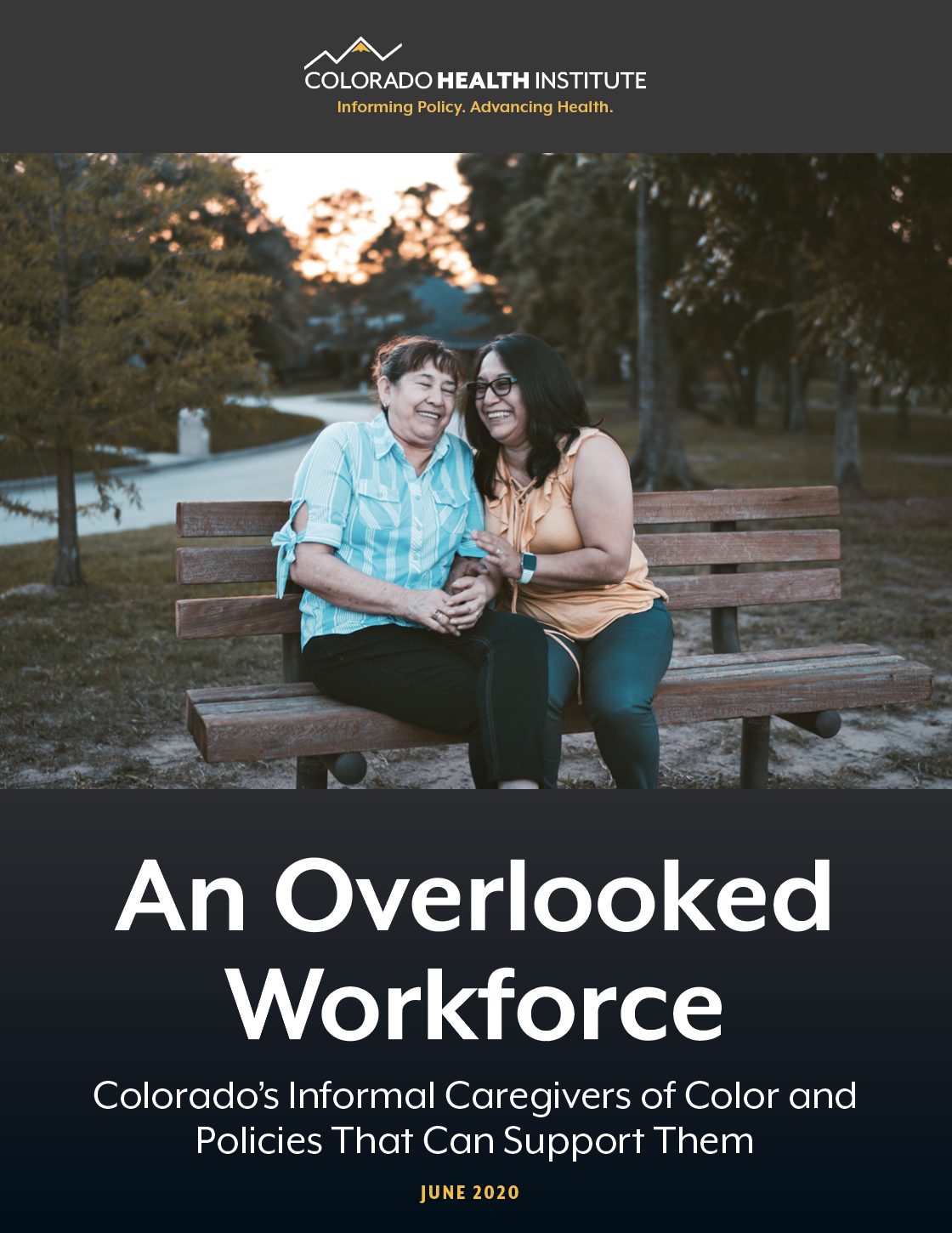Policy Considerations
Decision-makers can address needs within health care settings and community-based organizations and through legislative and regulatory action. Policy solutions should be co-created with caregivers and communities of color in order to be responsive to their needs.
HEALTH SYSTEMS
Health administrators, clinicians, and other decision-makers within health care systems can address poor health outcomes and caregivers’ medical training needs by meeting them where they are — which is often in health care settings where they take their loved ones already receiving care. Potential policies could include implementing caregiver health assessment tools within health care settings and equipping caregivers to provide medical care.
Policy Consideration: Assess caregiver health needs.
Health care systems can mitigate negative health outcomes experienced by caregivers by assessing health needs either through caregivers’ appointments or when they bring care recipients in for care. This could mean implementing evidence-based assessment tools to measure mental health burdens specific to caregivers, such as the Tailored Caregiver Assessment and Referral tool. Increasing outreach to caregivers through telehealth also could mitigate negative health outcomes for caregivers by allowing care to happen at home during the caregiver’s “workday” — reducing the need for transportation or other supports, as well as the stigma associated with asking for help. Expanding these tools will require reimbursing health care providers for administering caregiver assessment tools, ensuring caregiver access to broadband and telehealth services, and offering services and assessments in multiple languages.
Policy Consideration: Ensure caregivers are equipped to provide medical care to loved ones.
Though caregivers are not medical professionals, they are often called upon to coordinate care for their loved ones and manage medications, injections, and wound care. Health systems can ensure caregivers are included throughout the care process and are also able to deliver care on their own after leaving the hospital. For example, health systems can equip communities of color by providing discharge plans, instruction manuals, and supports they need by providing materials in non-English languages. The CARE (Caregiver Advise, Record, Enable) Act of 2014 puts this best practice into federal law. It requires hospitals to keep the caregiver informed of their loved one’s discharge plans and provide education of post-discharge tasks such as medication management, injections, and wound care.
Some hospitals and health care systems in Colorado, including the VA Eastern Colorado Health Care System, are complying with the CARE Act by, for example, providing comprehensive trainings on post-discharge tasks to informal caregivers of post-9/11 veterans. By integrating caregivers more in the transition from the health care system to their homes, caregivers can feel better prepared and supported to excel in their role providing medical care.
COMMUNITY-BASED ORGANIZATIONS
Local organizations and leaders can address caregivers’ needs by working with community-based organizations such as the Colorado Respite Coalition, community centers, or other service agencies. Potential policy options could include screening for respite care needs and offering workforce development programs.
Policy Consideration: Screen caregivers for respite care needs.
Respite care is underused even though it can provide temporary relief to informal caregivers. Community-based organizations and skilled nursing facilities can increase utilization by screening informal caregivers for respite care needs and connecting them to respite care services. A respite care screening should assess where respite care is needed (in home versus out of home), frequency (weekly versus monthly), and length of service (two hours versus eight hours). Organizations like the Colorado Respite Coalition provide a model for the state by improving care access and coordination for those who either do not know about respite care services or cannot find a formal support that meets their family’s needs.
Policy Consideration: Build reimbursable skills in the caregiver workforce.
Community-based organizations can empower informal caregivers to be paid to provide care. For example, through Personal Assistance Services of Colorado (PASCO), the Family Caregiver Program started in 2001 to train caregivers to become Certified Nursing Assistants. The program equips otherwise unpaid caregivers with licensure and training necessary to get reimbursed for certain caregiving services. Outreach to caregivers in communities of color can ensure they have the skills to get reimbursed for the care they provide.
Latino Age Wave Colorado (LAWC) is an example of a workforce development program that trains and reimburses four informal caregivers in communities of color to provide caregiving services. Policymakers should consider implementing this model in other communities across the state.
STATE LEGISLATIVE AND REGULATORY ACTIONS
The state’s legislators and regulators can address caregivers’ financial strain. Sample policies could include expanding the state’s long-term services and supports program and the state’s definition of paid family medical leave.
Policy Consideration: Expand the long-term services and supports (LTSS) program.
State legislators and regulators can address financial strain that caregivers experience by directing limited resources through Health First Colorado’s long-term services and supports (LTSS) program, which currently offers training, counseling, support groups, and respite care. Informal caregivers, especially those within communities of color, experience barriers like cost, geographic availability, and restrictions on the types and amounts of services that are covered when they try to use services like respite care. Because of this, Health First Colorado should consider expanding the types of services that are covered and the amount of time that is reimbursable. Informal caregivers from communities of color are more likely than white caregivers to lack documentation — making them ineligible for Health First Colorado. Policymakers should consider making them eligible for the LTSS program. A tight state budget will make this option difficult in the short-term, but the LTSS program will remain a key component of the state’s strategies to care for its aging population.
Policy Consideration: Expand the state’s definition of “family” used to determine paid family medical leave.
State legislators and regulators can expand paid family leave for informal caregivers to provide benefits to many working caregivers and their families. In Colorado, that means expanding the definition of “family.” Currently, Colorado relies on the federal Family and Medical Leave Act (FMLA) definition, which limits family to a spouse, child, or parent. Policymakers in Colorado could expand the definition to include whomever a caregiver is taking long-term care of. The Family and Medical Leave Insurance (FAMLI) Program, a ballot initiative expected in 2020, would provide an opportunity for policymakers to adopt a new definition of family. Oregon’s family medical leave law definition of a family member can serve as a model. It states that “any individual related by blood or affinity whose close association with a covered individual is the equivalent of a family relationship.”
Expanding the definition of “family” would likely require employers to allow their staff to take additional family leave. This expansion also would increase state spending on regulating employers. It would help ensure caregivers are getting paid for their time, both at work and with their family. People in communities of color are especially in need of an expanded definition of “family,” as they are more likely to take care of extended family.
Conclusion
Informal caregivers are getting left behind. Compared to the general population, informal caregivers — especially those from communities of color — experience worse health outcomes, a lack of formal support, and financial strain. And often, programs and interventions are not tailored to meet the specific needs of these communities.
Some organizations have started addressing those specific needs. For example, the Latino Age Wave Colorado trains Conectoras to support the growing Hispanic/Latinx population, and the Colorado Respite Coalition connects caregivers to respite care services.
As the state’s population ages, policymakers will need to address the needs of both the growing older adult population and those taking care of them.




